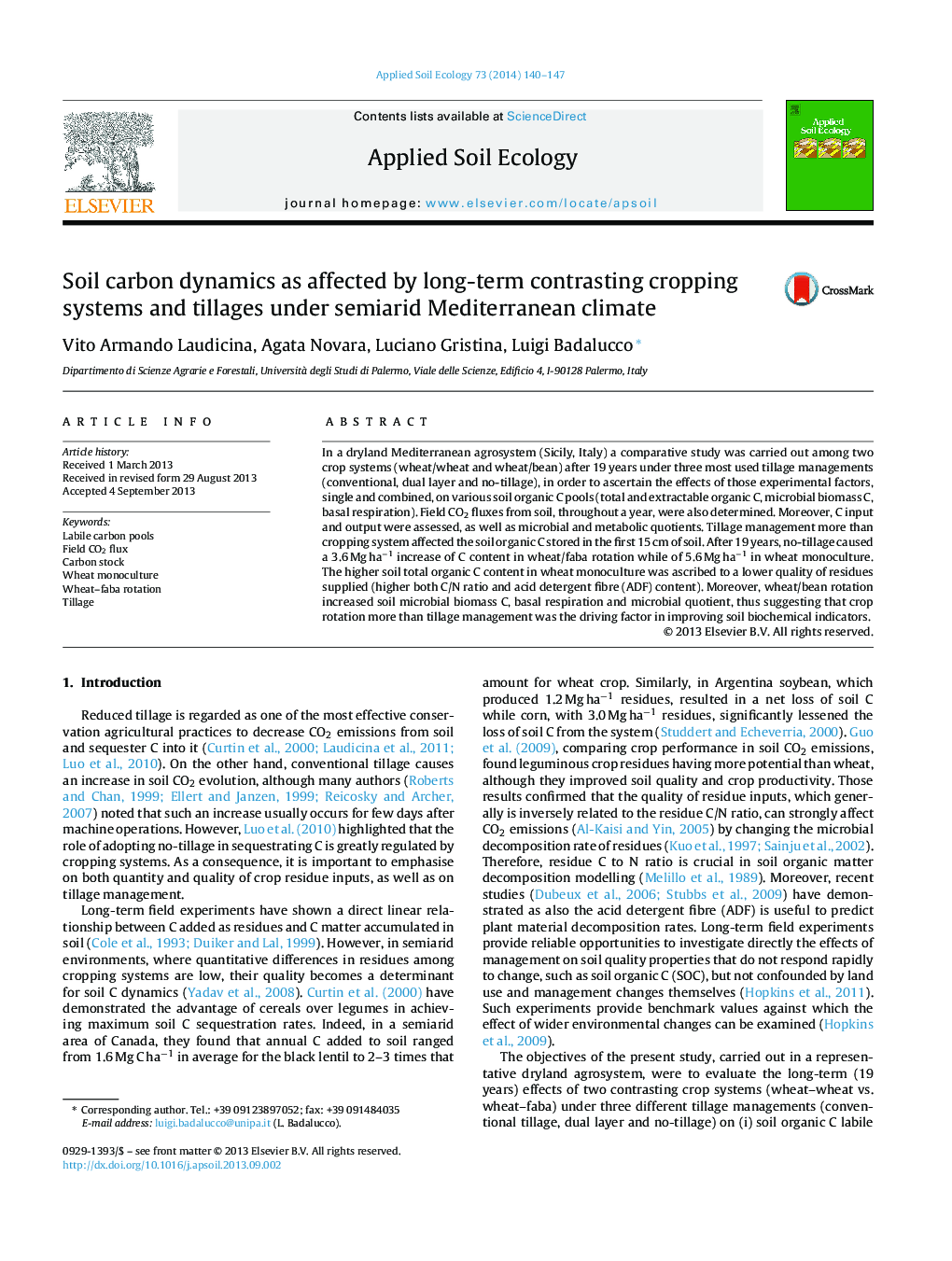| Article ID | Journal | Published Year | Pages | File Type |
|---|---|---|---|---|
| 4382378 | Applied Soil Ecology | 2014 | 8 Pages |
•Long-term effects of different crop managements on soil C pools were compared.•Amount of soil organic C was higher in wheat/wheat than wheat/faba rotation.•The wheat/faba rotation improved all measured soil biochemical indicators.•Field CO2 fluxes from soil was greatly affected by tillage management.
In a dryland Mediterranean agrosystem (Sicily, Italy) a comparative study was carried out among two crop systems (wheat/wheat and wheat/bean) after 19 years under three most used tillage managements (conventional, dual layer and no-tillage), in order to ascertain the effects of those experimental factors, single and combined, on various soil organic C pools (total and extractable organic C, microbial biomass C, basal respiration). Field CO2 fluxes from soil, throughout a year, were also determined. Moreover, C input and output were assessed, as well as microbial and metabolic quotients. Tillage management more than cropping system affected the soil organic C stored in the first 15 cm of soil. After 19 years, no-tillage caused a 3.6 Mg ha−1 increase of C content in wheat/faba rotation while of 5.6 Mg ha−1 in wheat monoculture. The higher soil total organic C content in wheat monoculture was ascribed to a lower quality of residues supplied (higher both C/N ratio and acid detergent fibre (ADF) content). Moreover, wheat/bean rotation increased soil microbial biomass C, basal respiration and microbial quotient, thus suggesting that crop rotation more than tillage management was the driving factor in improving soil biochemical indicators.
